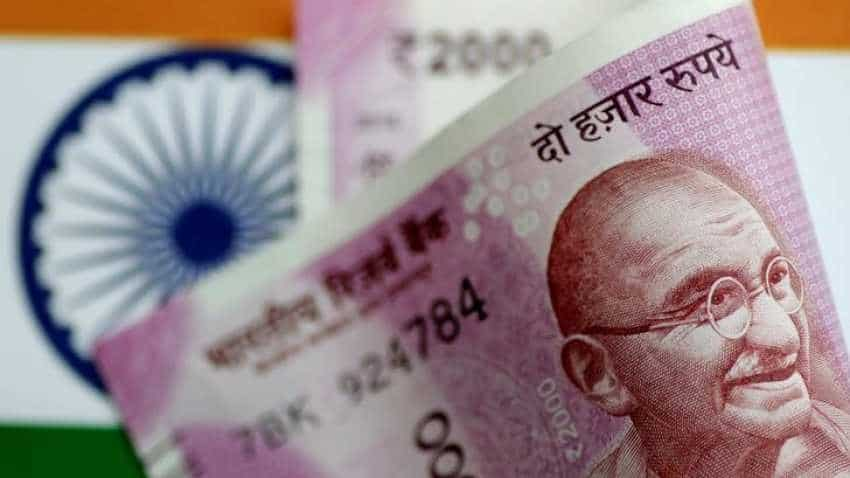India stops spending cash? See what fuel prices made you do!
The dip in the discretionary spending of people may have resulted in the cash with the public remaining static, according to State Bank of India's report on the economy.

Inflation and higher oil prices may have dampened the currency in circulation (CIC) which was increasing exponentially as expected post demonetisation. Currency in circulation is the money used by consumers, public and businesses for various transactions.
The dip in the discretionary spending of people may have resulted in the cash with the public remaining static, according to State Bank of India's report on the economy.
The CIC increased from Rs 9 lakh crore in January 2017 to Rs 19.5 lakh crore as on September 14 this year. However, since the starting of May 2018, it has been in the range of Rs 19.0-19.6 lakh crore, according to the latest data released by Reserve Bank of India(RBI).
"One possible reason could be people may be cutting back discretionary spending with the recent spurt in fuel prices, mostly in rural areas," SBI Ecowrap said in a report. RBI is selling dollars directly from its foreign exchange reserves to designated dealers/ banks, thereby withdrawing rupee resources in return, thus reducing money currency in circulation, the report added.
However, such intervention, since taking place between banks, should not have a major impact on systemic liquidity. The other reason, though insignificant, could also be RBI replacing soiled notes.
"Whatever is the reason for such trend, this implies that bank deposit growth will at least not face pressure in the interregnum with less of a currency leakage as of now," the report added. The latest RBI data on bank deposit growth has shown that bank deposits grew less than 10% on a year-on-year basis in between August 18, 2017, and August 17, 2018.
The decline in CIC, seen in the last fortnight of every July, is partly explained by the low cash demand from the agriculture sector. "The demand for currency will increase post-monsoon as the harvesting begins in October followed by rabi sowing, eventually giving rise to cash requirement. The harvest requires labour wages distribution, hiring of equipment and rabi sowing leads to overall requirement of money for purchase of seeds, fertilisers," the report added.
Watch this Zee Business video
The festive season also brings along its natural demand, which gets accentuated with buying of gold, automobiles, etc, increasing the demand for currency. The recent spurt in fuel prices may result in a cut in discretionary spending by households.
Source: DNA Money
Get Latest Business News, Stock Market Updates and Videos; Check your tax outgo through Income Tax Calculator and save money through our Personal Finance coverage. Check Business Breaking News Live on Zee Business Twitter and Facebook. Subscribe on YouTube.
RECOMMENDED STORIES

Top 7 Mutual Funds With Highest Returns in 10 Years: Rs 10 lakh investment in No 1 scheme has turned into Rs 79,46,160 in 10 years

Fundamental picks by brokerage: These 3 largecap, 2 midcap stocks can give up to 28% return - Check targets

Retirement Planning: Investment Rs 20 lakh, retirement corpus goal Rs 3.40 crore; know how you can achieve it

SIP vs PPF: How much corpus you can build in 15 years by investing Rs 1.5 lakh per year? Understand through calculations

SBI Senior Citizen Latest FD Rates: What senior citizens can get on Rs 7 lakh, Rs 14 lakh, and Rs 21 lakh investments in Amrit Vrishti, 1-, 3-, and 5-year fixed deposits

Tamil Nadu Weather Alert: Chennai may receive heavy rains; IMD issues yellow & orange alerts in these districts
09:45 AM IST










 Currency market update: Rupee settles 4 paise lower at 83.96 against US dollar
Currency market update: Rupee settles 4 paise lower at 83.96 against US dollar Rupee rises to 83.49 against US dollar in early trade
Rupee rises to 83.49 against US dollar in early trade Rupee slips to end at 83.52 vs dollar
Rupee slips to end at 83.52 vs dollar  Rupee slips to end at 83.52 vs dollar on Wednesday
Rupee slips to end at 83.52 vs dollar on Wednesday Currency Market News: Rupee opens on a flat note at 83.50 vs dollar
Currency Market News: Rupee opens on a flat note at 83.50 vs dollar